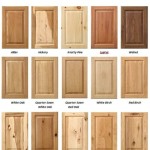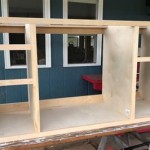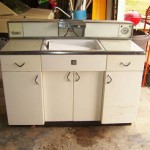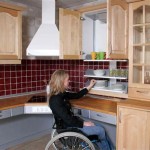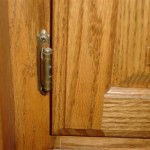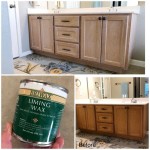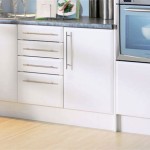Kitchen Cabinet Finishes: A Comprehensive Guide
Kitchen cabinet finishes are a critical component in the overall aesthetic and functional design of a kitchen. The finish not only defines the visual appeal of the cabinets, influencing the style and atmosphere of the room, but also provides a protective layer against daily wear and tear. Selecting the appropriate finish requires careful consideration of factors such as desired style, durability requirements, budget constraints, and maintenance preferences. A well-chosen finish can significantly extend the lifespan of kitchen cabinetry while enhancing the overall value of the home.
The process of choosing a kitchen cabinet finish involves understanding the various options available, from paints and stains to more specialized techniques like glazes and distressing. Each type of finish offers a unique combination of aesthetic qualities and performance characteristics. Therefore, a thorough understanding of these characteristics is essential for making an informed decision that aligns with both design aspirations and practical needs.
Understanding the Types of Kitchen Cabinet Finishes
Kitchen cabinet finishes can be broadly categorized into several distinct types, each offering unique aesthetic and performance characteristics. These categories include paints, stains, varnishes, laminates, and specialty finishes such as glazes and distressing techniques. Each type interacts differently with the underlying cabinet material, primarily wood, and offers varying degrees of durability, maintenance requirements, and visual appeal.
Paints: Paint is a versatile option that provides a solid, opaque color to the cabinets. It offers a wide range of color choices and can be applied in various sheens, from matte to high-gloss. Painted finishes are excellent for achieving a modern, clean look and can effectively conceal the natural grain of the wood. This is beneficial for cabinets constructed from less expensive or less visually appealing wood species. However, painted surfaces can be more susceptible to chipping and scratching compared to some other finishes, requiring more frequent touch-ups.
Stains: Stains, on the other hand, are designed to enhance the natural beauty of the wood grain. They penetrate the wood surface, adding color while allowing the grain pattern to remain visible. Stains are available in a wide spectrum of shades, from light and natural to dark and rich. This finish is ideal for highlighting the inherent character of the wood and creating a warm, inviting atmosphere. A clear topcoat is typically applied over the stain to provide protection against moisture and wear. The durability of a stained finish largely depends on the quality and type of the topcoat used.
Varnishes: Varnish provides a clear, protective coating that enhances the natural color and grain of the wood. It offers a durable, water-resistant surface that is relatively easy to clean. Varnish is available in different sheens, from matte to glossy, allowing for customization of the final appearance. While varnish provides good protection, it can be prone to yellowing over time, especially with exposure to sunlight. Polyurethane varnish is a popular choice due to its superior durability and resistance to scratching and chemicals.
Laminates: Laminate finishes consist of a thin layer of decorative paper or plastic bonded to a substrate, typically particleboard or MDF (medium-density fiberboard). Laminates offer a cost-effective and durable option for kitchen cabinets. They are available in a wide variety of colors, patterns, and textures, including options that mimic the look of wood grain. Laminate surfaces are resistant to scratches, stains, and moisture, making them a practical choice for high-traffic kitchens. However, laminates are difficult to repair if damaged and may not have the same aesthetic appeal as natural wood finishes.
Specialty Finishes: Specialty finishes encompass a range of techniques designed to create unique and customized looks. These include glazes, distressing, and antiquing. Glazes are translucent color washes that are applied over a base finish to highlight details and add depth. Distressing involves intentionally creating imperfections, such as dents, scratches, and worn edges, to give the cabinets a rustic, aged appearance. Antiquing techniques replicate the look of aged and weathered wood, often involving the application of dark glazes or stains followed by selective removal to reveal the underlying finish.
Factors Influencing the Choice of Kitchen Cabinet Finish
Selecting the appropriate kitchen cabinet finish is a multifaceted decision that depends on several key factors. These factors include the desired style of the kitchen, the level of durability required, the budget allocated for the project, and the maintenance expectations of the homeowner. Each of these aspects plays a crucial role in narrowing down the options and ensuring that the chosen finish meets both aesthetic and practical needs.
Desired Style: The overall style of the kitchen is a primary determinant of the appropriate cabinet finish. Modern kitchens often feature clean lines, minimalist designs, and neutral color palettes. In this context, painted cabinets in white, gray, or black, with a matte or satin sheen, are popular choices. Alternatively, sleek laminate finishes can also complement a modern aesthetic. Traditional kitchens, on the other hand, often incorporate warmer tones and more intricate details. Stained wood cabinets with raised panel doors are a common feature of traditional designs. Specialty finishes like glazing and distressing can further enhance the traditional look by adding depth and character. Rustic kitchens embrace a more natural and weathered appearance. Distressed or antiqued finishes, combined with natural wood tones, are ideal for creating a rustic ambiance.
Durability Requirements: The level of durability required for kitchen cabinets depends on the frequency of use and the potential for wear and tear. High-traffic kitchens, especially those with children or pets, require finishes that are resistant to scratches, stains, and moisture. Laminate finishes and durable varnishes, such as polyurethane, are excellent choices for high-traffic areas. Painted finishes, while aesthetically pleasing, may require more frequent touch-ups to maintain their appearance. Stained finishes, when protected with a high-quality topcoat, can also provide good durability. The type of wood used for the cabinets also plays a role in durability; hardwoods like maple and oak are more resistant to dents and scratches than softwoods like pine.
Budget Considerations: The cost of kitchen cabinet finishes can vary significantly depending on the type of finish, the complexity of the application process, and the materials used. Laminate finishes are generally the most cost-effective option, while custom finishes like glazing and distressing can be more expensive due to the labor-intensive nature of the work. Stained and painted finishes fall in the middle range, with the cost depending on the quality of the materials and the number of coats required. It is important to establish a budget early in the planning process and to prioritize the finishes that offer the best balance of cost, aesthetics, and durability within the allocated budget.
Maintenance Expectations: The amount of time and effort a homeowner is willing to invest in maintaining kitchen cabinets is another important consideration. Some finishes, like laminate, are relatively low-maintenance and can be easily cleaned with a damp cloth. Other finishes, like painted cabinets, may require more frequent cleaning and touch-ups to prevent staining and chipping. Stained and varnished cabinets typically require periodic polishing to maintain their shine and protect the finish. Specialty finishes may require specialized cleaning products and techniques to avoid damaging the delicate details. Homeowners should carefully consider their lifestyle and willingness to maintain the cabinets when selecting a finish.
Application Techniques and Considerations
The application of kitchen cabinet finishes is a critical step in achieving a high-quality and long-lasting result. The specific techniques used will vary depending on the type of finish chosen, but some general principles apply to all applications. Proper surface preparation, the use of appropriate tools and materials, and adherence to recommended drying times are essential for achieving a smooth, durable, and visually appealing finish.
Surface Preparation: Proper surface preparation is paramount for ensuring the adhesion and longevity of any cabinet finish. This typically involves cleaning the wood surface to remove any dirt, grease, or existing finishes. Sanding is often necessary to create a smooth, even surface and to provide a "tooth" for the finish to grip. The grit of sandpaper used will vary depending on the type of wood and the desired level of smoothness. After sanding, it is important to remove any sanding dust with a tack cloth or vacuum. For previously finished cabinets, it may be necessary to strip the old finish completely before applying a new one. This can be done using chemical strippers or sanding, depending on the type of finish and the condition of the wood.
Application Methods: The method of application will depend on the type of finish and the desired level of control. Paint and varnish can be applied using brushes, rollers, or sprayers. Brushes are ideal for detailed work and for applying finishes in small areas. Rollers are suitable for covering large surfaces quickly and evenly. Sprayers provide the most consistent and professional-looking finish, but they require more skill and equipment. Stains are typically applied with a cloth or brush and then wiped off to achieve the desired color intensity. Glazes are often applied with a brush or sponge and then manipulated to create texture and depth. Regardless of the application method, it is important to apply the finish in thin, even coats to avoid drips, runs, and other imperfections.
Drying and Curing: Proper drying and curing times are essential for ensuring the durability and longevity of the finish. Each type of finish has specific drying and curing requirements, which should be followed carefully. Rushing the drying process can result in a soft, sticky finish that is prone to damage. In general, oil-based finishes take longer to dry than water-based finishes. The drying time can also be affected by environmental factors such as temperature and humidity. It is important to provide adequate ventilation during the drying process to facilitate the evaporation of solvents. Curing is the process by which the finish hardens and becomes fully resistant to scratches and chemicals. Some finishes may require several days or even weeks to fully cure.
Safety Precautions: When working with kitchen cabinet finishes, it is important to take appropriate safety precautions to protect oneself from exposure to harmful chemicals. Many finishes contain volatile organic compounds (VOCs), which can be harmful if inhaled or absorbed through the skin. It is important to work in a well-ventilated area and to wear appropriate personal protective equipment, such as a respirator, gloves, and eye protection. It is also important to follow the manufacturer's instructions for handling and disposal of the finish and any waste materials. Proper storage of finishes is also important to prevent accidental spills and fires.
In conclusion, selecting and applying the appropriate kitchen cabinet finish is a crucial aspect of kitchen design and renovation. Understanding the various types of finishes, the factors influencing their selection, and the proper application techniques are essential for achieving a durable, aesthetically pleasing, and long-lasting result. By carefully considering these factors and taking appropriate precautions, homeowners can create a kitchen that is both beautiful and functional.

The Most Durable Kitchen Cabinets And Cabinet Finishes
8 Best Cabinet Finishes Paints Stains Glazes And More Vevano

7 Types Of Kitchen Cabinet Finishes Kings

Kitchen Cabinet Finishes For Your Home Designcafe

Kitchen Cabinet Finishes Cabinets Of The Desert

A Master Guide To Kitchen Cabinet Finishes

Choosing Kitchen Cupboard Finishes Which Is Best Adina Designed Interiors

How To Choose The Best Kitchen Cabinet Finish

7 Types Of Kitchen Cabinet Finishes Kings

Basics Benefits And Drawbacks Of Matte Cabinet Finishes Awa Kitchen Cabinets
Related Posts

